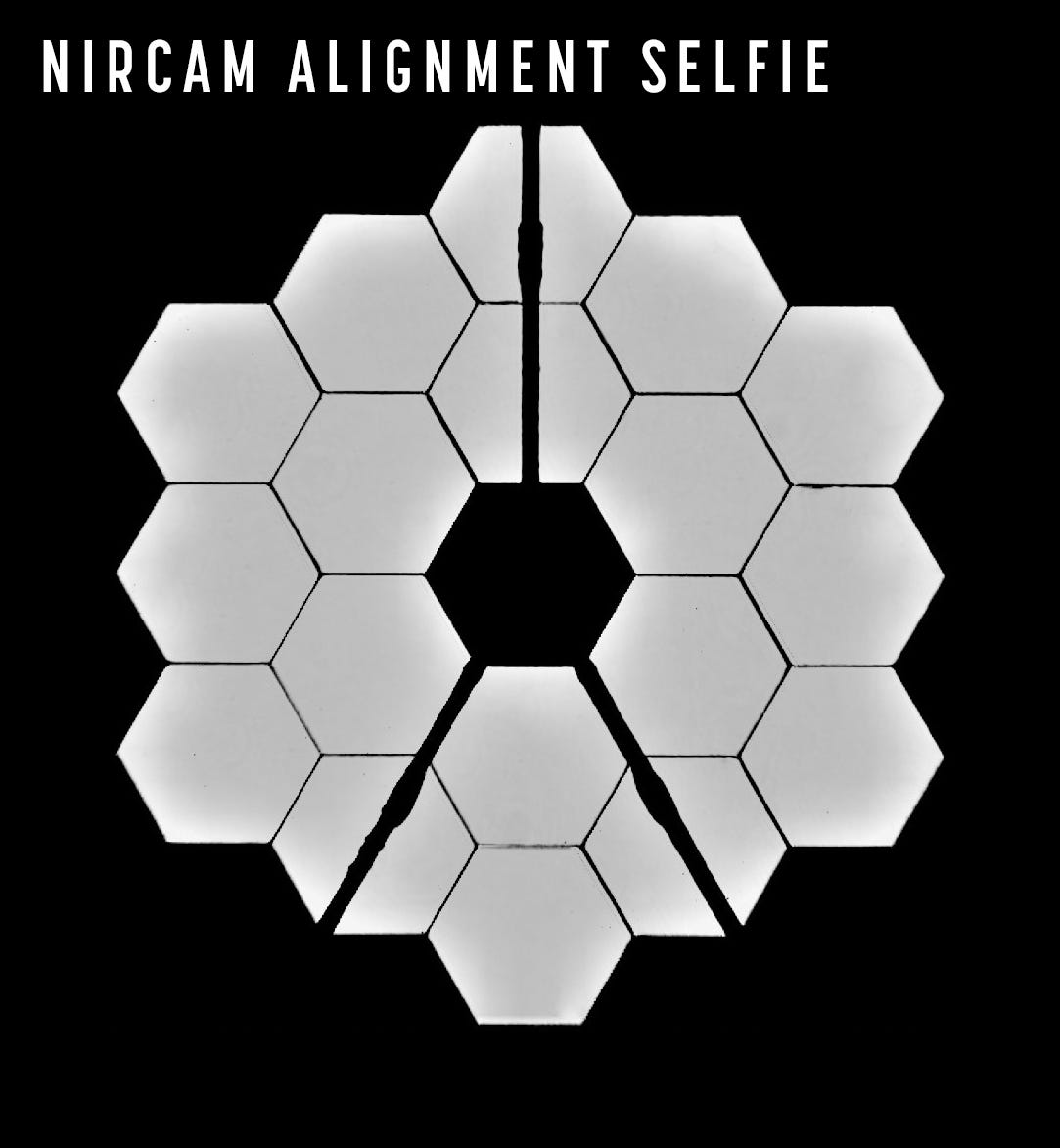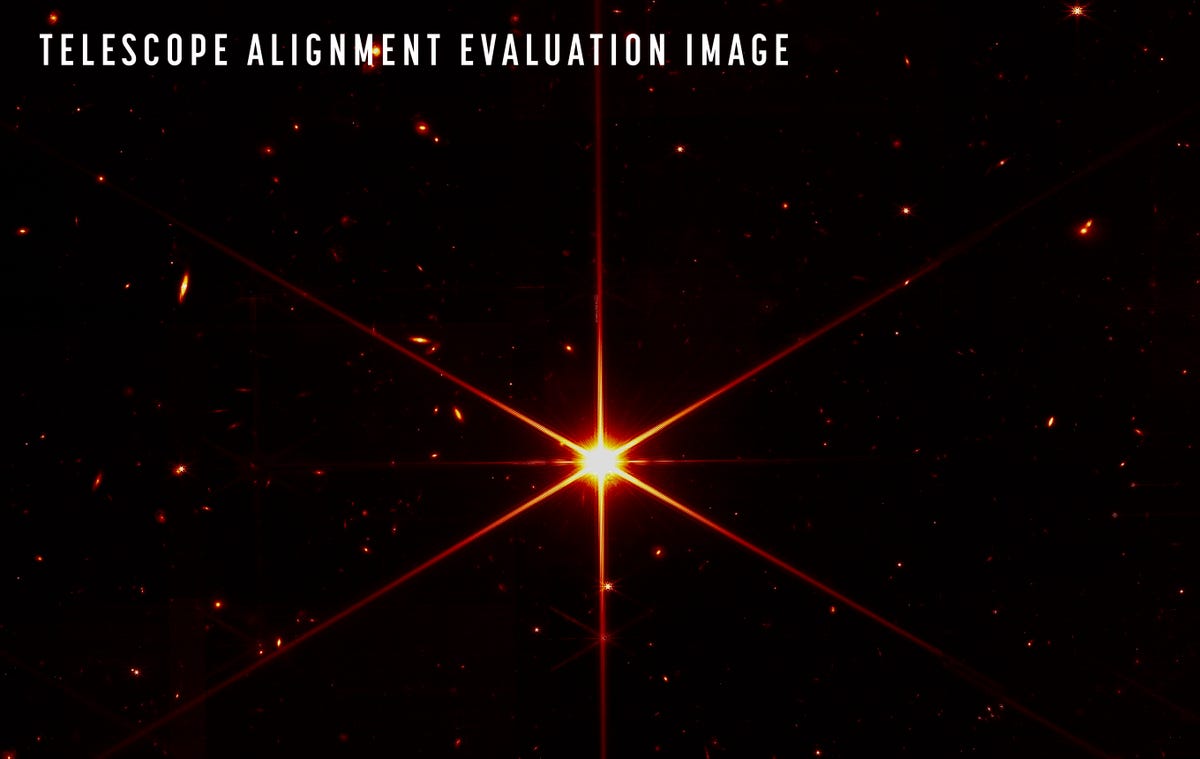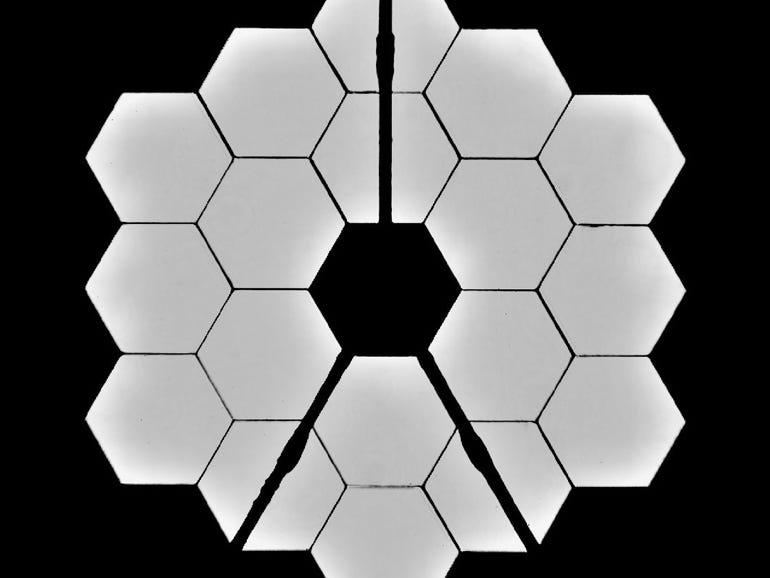NASA’s James Web Space Telescope sends back clearest images to date

The “selfie” image of Webb’s 18 primary mirror segments collecting light from the same star in unison.
Image: NASA
The team behind NASA’s James Webb Space Telescope (JWST) have claimed to have captured the “highest resolution infrared images taken from space ever” as part of its first test shot.
The images released by NASA include a “selfie” of JWST completing the “fine phasing” alignment of its 18 hexagonal mirrors to act as a single mirror, and images of a single star and the galaxies and stars behind it.
“We have fully aligned and focused the telescope on a star, and the performance is beating specifications. We are excited about what this means for science,” NASA Goddard deputy optical telescope element manager for Webb said.
NASA also confirmed there were no critical issues or blockages to the JWST optical path, and that the test shot showed the mirrors can collect light from distant objects and deliver it to its instruments without issue.
“More than 20 years ago, the Webb team set out to build the most powerful telescope that anyone has ever put in space and came up with an audacious optical design to meet demanding science goals,” NASA science mission directorate associate administrator Thomas Zurbuchen said.
NASA said the team will now spend the next six weeks finalising the alignment of the telescope by using algorithms to assess and calculate any final corrections for completion by early May or sooner. Following this, the team will spend two months prepping the instruments, with NASA expecting to capture its first set of scientific full-resolution images and data in the summer.
The JWST was launched in December from Europe’s Spaceport in Kourou, French Guiana, as part of an international program between NASA, the European Space Agency, and the Canadian Space Agency. Located one million miles away from Earth, the telescope has been developed to study the evolution of our solar system.

Image: NASA
Related Coverage
NASA has a new system to spot asteroids that might hit the Earth
NASA has developed a smarter system for calculating the probability an asteroid will strike Earth.
NASA has just fixed the mysterious computer problem with its famous space telescope
The Hubble space telescope has been down for more than a month, but NASA’s engineers have successfully fixed the problem.
CSIRO’s Parkes radio telescope to support Intuitive Machines’ commercial moon landing
In a five-year agreement, the dish will provide ground station support to Intuitive Machines.
These new smart telescopes aim to open up stargazing and astronomy to all
As interest in astronomy rises with the pandemic, a startup is looking to bring stargazing to a wider audience with Vespera.




